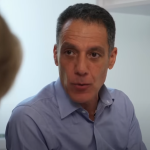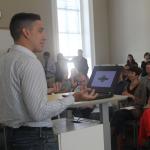From California Magazine
Automatic Writing: The artificial intelligence behind Wikipedia
By Jyoti Madhusoodanan
If you’ve ever read through a few Wikipedia entries on U.S. cities and thought they sounded, well … robotic, you might be right. Chances are the article was written by a piece of software. Automated programs called bots have been working behind the scenes since the online public encyclopedia was born. They’ve become such important entities that one, named Antivandalism Bot, was even nominated for a spot on the governing committee (it didn’t win). And like good politicians the bots are stirring up controversy.
“Bots aren’t just programs—they are participants with lives and responsibilities,” says Stuart Geiger, a doctoral student in Berkeley’s School of Information. “If we’re interested in understanding how Wikipedia works, we have to include these bots in our stories and our histories.” Geiger, who describes himself as a kid who grew up on the Internet, has been investigating the social structure of Wikipedia for several years. He recently summarized his findings in a chapter of the book Critical Point of View: A Wikipedia Reader, published by the nonprofit Institute of Network Cultures in Amsterdam.
From their humble beginnings as the lines of code that “did the tasks no human wanted to do,” bots have become integral players in the editorial and social structure of Wikipedia, according to Geiger. Organizing global workflows, enforcing antivandalism policies and editorial guidelines such as the “only three reversions in 24 hours” rule, bots monitor user activity and continually curate the data they gather....
There’s a limit to how much bots can do, though. “Bots don’t replace humans. Their role is really to augment the human experience,” Geiger clarifies. “The goal is to have a bot do one thing that a human does, and do it well enough that you can’t even tell it’s a robot doing it.”









